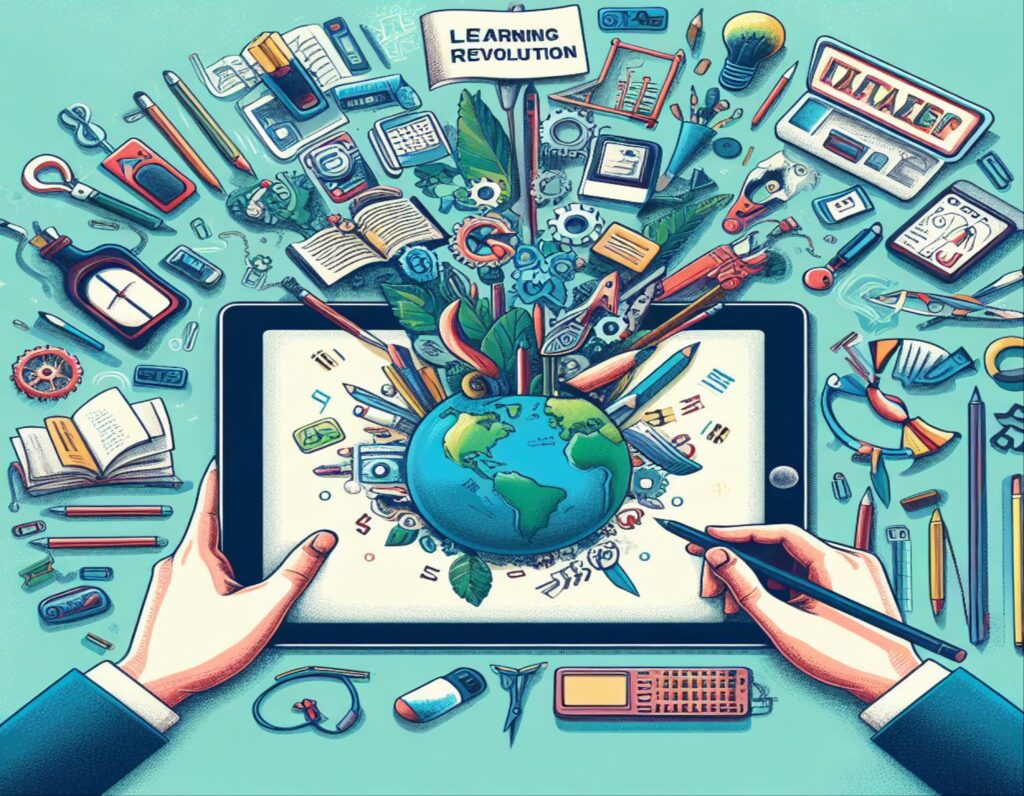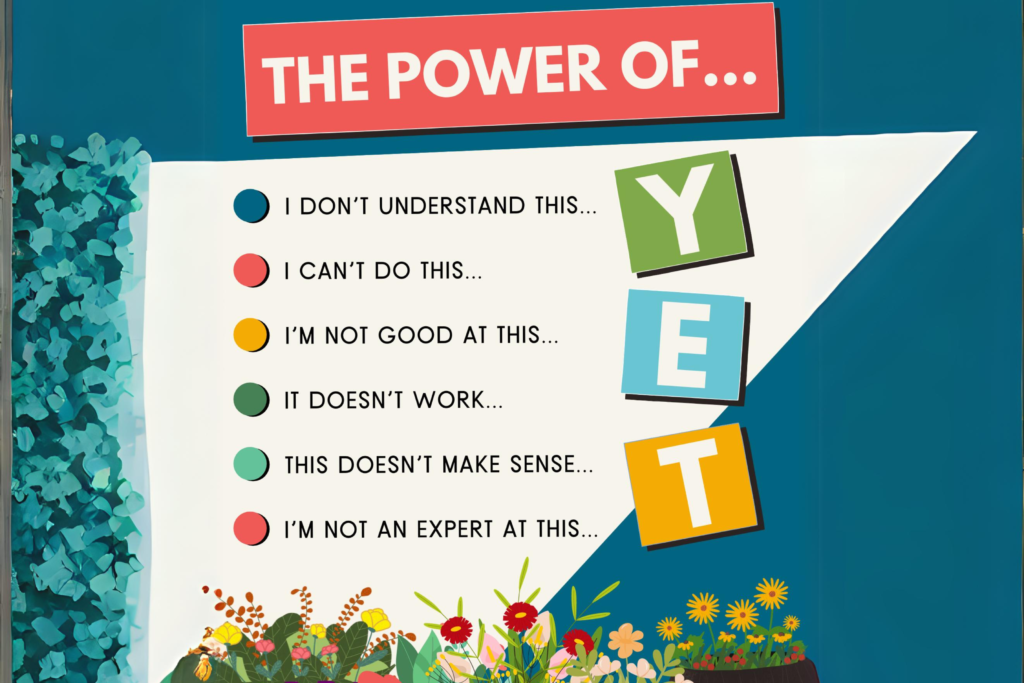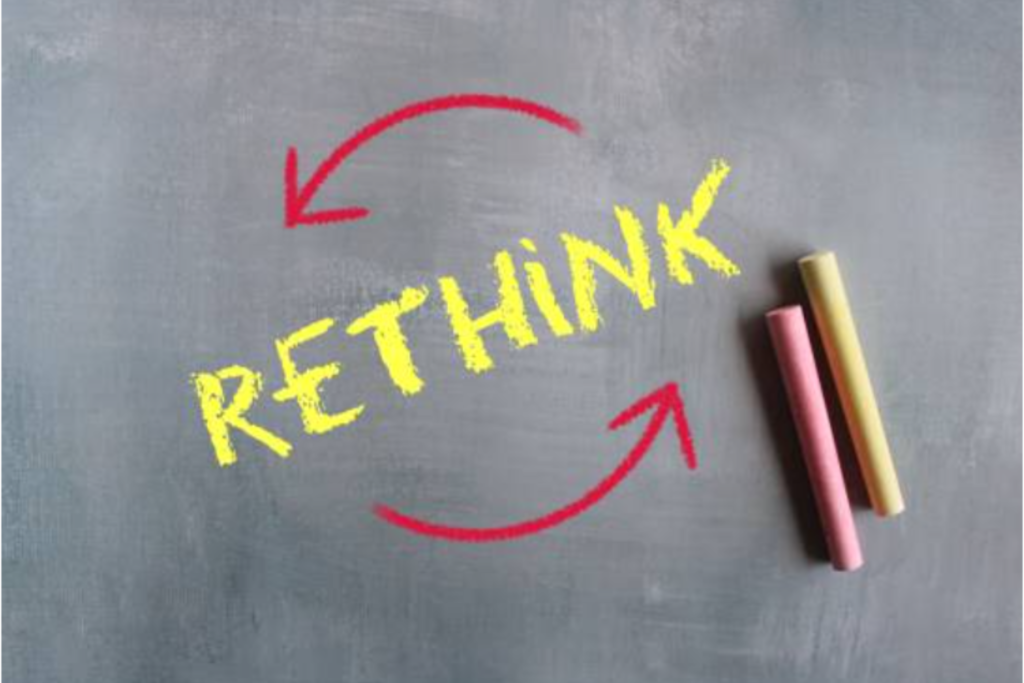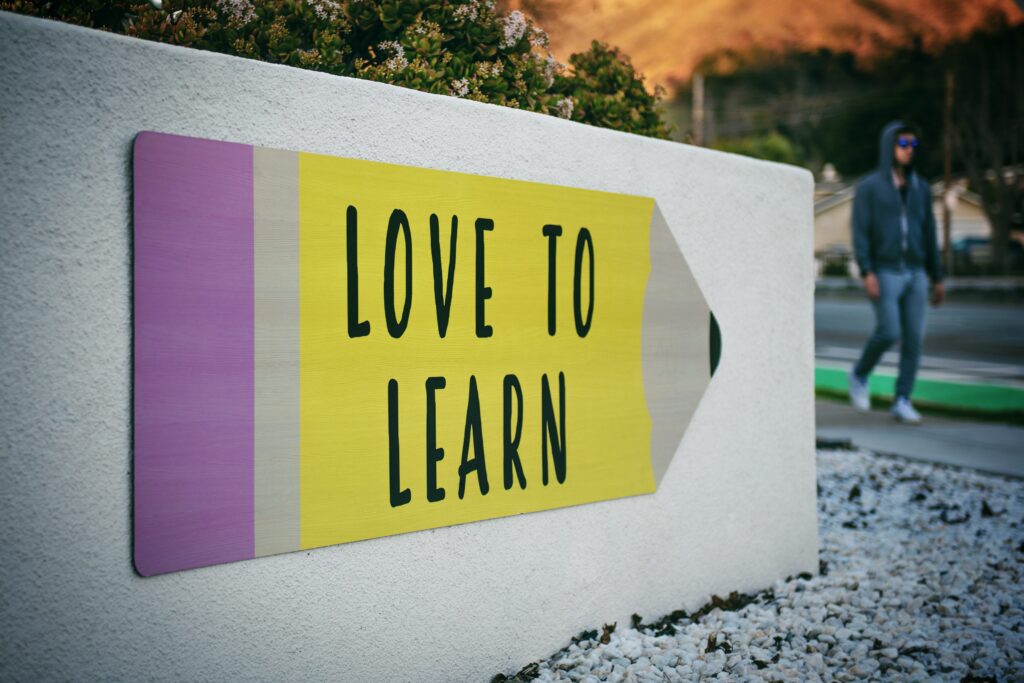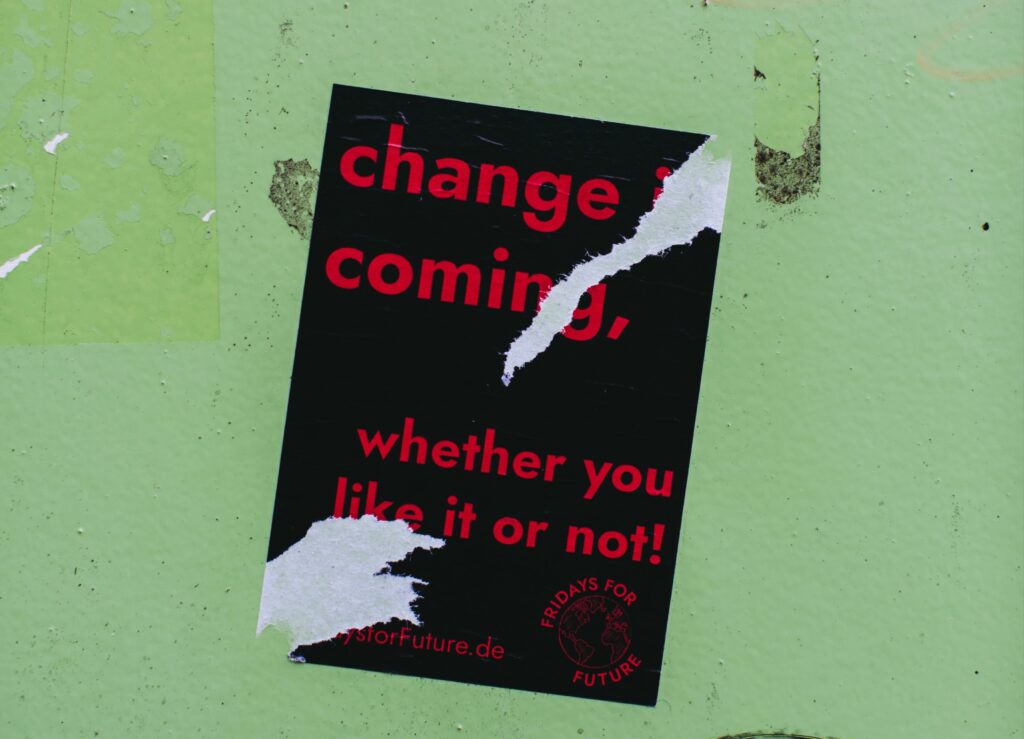The implementation of the “Interactive Learning Pods: A Dynamic Blended Learning Solution” initiative holds immense potential to significantly enhance the learning experience for our students. By leveraging the effectiveness of the Station Rotation Blended Learning Model, this innovative approach addresses the challenge of effectively meeting the diverse preferences and needs of our students while fostering a more engaging classroom environment.
Traditional teaching methods often struggle to engage all students, resulting in varying levels of participation and comprehension. However, the Interactive Learning Pods initiative aims to shift the paradigm by creating smaller learning groups tailored to the unique requirements of students. Through personalized learning plans and technology-driven activities, students will have the opportunity to collaborate and learn in an environment that caters to their individual strengths and areas for improvement.
Moreover, the role of the teacher will evolve from being a sole provider of information to a facilitator and mentor within each small learning group. This shift empowers students to take ownership of their learning journey while receiving guidance and support from their teachers.
The importance of successful Professional Learning (PL) sessions cannot be overstated in implementing this initiative effectively. The PL sessions plan aims to equip our 3rd-grade Math teachers with the knowledge and skills necessary to effectively implement the Interactive Learning Pods initiative in their classrooms.
By integrating the five key principles of effective Professional Learning (importance of ongoing support, active engagement, modeling, relevance of specific content, and duration) into our PL plan, we ensure that teachers are equipped to adopt the Interactive Learning Pods model and adequately support their students’ learning needs.
Furthermore, the plan to pilot test the initiative with our 3rd-grade Math Teachers and Math coach in the first year demonstrates a strategic approach to implementation. This pilot test will allow us to gather valuable insights, assess effectiveness, and make necessary adjustments before scaling the initiative across other grade levels.
In summary, the successful implementation of the Interactive Learning Pods initiative depends on providing our teachers with high-quality PL sessions. These sessions will not only equip them with the necessary knowledge and skills but also inspire them to embrace innovative approaches to teaching and learning. Ultimately, our students will benefit from a more engaging and personalized learning experience, setting them on a path to lifelong success.
1. Duration
During the school year, there will be a total of 4 PL sessions dedicated to our 3rd-grade Math Teachers and coach. Each PL session will be conducted bimonthly, spanning a duration of 3 hours to allow for in-depth discussions, collaborative activities, and hands-on training related to the Interactive Learning Pods initiative.
In addition to the PL sessions, teachers will participate in coaching sessions with the PL Facilitator once a month. These coaching sessions will provide personalized support, feedback, and guidance to teachers as they navigate the implementation of Interactive Learning Pods in their classrooms. The coaching sessions will serve as opportunities for teachers to reflect on their practice, address challenges, and refine their instructional strategies in alignment with the goals of the initiative.
Throughout the academic year, teachers will engage in approximately 50 hours of professional development.
2. Support
Throughout the pilot test process and PL sessions, teachers will receive comprehensive support to ensure their success in implementing the Interactive Learning Pods initiative. This support will be provided through various avenues:
- Professional Learning Sessions: During PL sessions, teachers will receive in-depth training on the principles and practices of the Interactive Learning Pods model. These sessions will include interactive discussions, hands-on activities, and collaborative exercises to enhance understanding and skill development.
- Coaching Sessions: Regular coaching sessions with the PL Facilitator will offer personalized support and guidance tailored to the needs of individual teachers. These sessions will provide opportunities for reflection, problem-solving, and skill refinement, helping teachers navigate challenges and optimize their implementation of the initiative.
- Ongoing Communication: Teachers will have access to continuous communication channels, including email, phone, messaging app, and in-person consultations. They can reach out to the PL Facilitator and Math coach at any time for assistance, clarification, or additional support as needed.
- Peer Collaboration: Participation in a dedicated Google Classroom will enable teachers to collaborate with their peers, share resources, and exchange ideas throughout the pilot test process. This collaborative platform will foster a sense of community and enable teachers to learn from each other’s experiences.
- Continuous Feedback: Teachers will receive ongoing feedback and support from the PL Facilitator, who will monitor progress, provide constructive feedback, and offer encouragement to ensure teachers feel supported and motivated throughout the process.
3. Engagement
During the PL sessions, teachers will engage in a variety of activities designed to promote active learning and collaboration. These activities may include interactive discussions, hands-on exercises, group work, case studies, and reflection exercises. The sessions will be structured to encourage participation and exchange of ideas among teachers, fostering a supportive and dynamic learning environment.
Throughout the entire process, teachers will remain engaged through continuous communication and support channels. They will have access to a dedicated Google Classroom where they can share resources, ask questions, and collaborate with their peers. Additionally, regular coaching sessions will provide opportunities for personalized guidance and feedback, ensuring that teachers feel supported and empowered to implement the Interactive Learning Pods initiative effectively in their classrooms.
4. Modeling
To effectively teach new skills to teachers, we will utilize a modeling approach during PL sessions and classroom observations. Modeling involves demonstrating the desired behavior or skill in action, providing teachers with a clear example to observe and emulate. Here’s how we will incorporate modeling into our professional learning process:
- Demonstration: We will begin by demonstrating the new skills or practices ourselves, showing teachers how to implement them effectively in the classroom. This may involve role-playing scenarios, using real-life examples, or showcasing instructional videos.
- Step-by-Step Guidance: After the initial demonstration, we will break down the skill into manageable steps and provide teachers with step-by-step guidance on how to execute each component effectively. This will help teachers understand the process and sequence of actions required to successfully implement the skill.
- Interactive Practice: Following the demonstration and guidance, teachers will have the opportunity to engage in interactive practice sessions where they can apply the new skill in a simulated or real-life classroom setting. This hands-on practice allows teachers to actively participate and reinforce their learning through practical application.
- Feedback and Reflection: Throughout the modeling process, we will provide ongoing feedback and encouragement to teachers, highlighting areas of strength and offering constructive suggestions for improvement. Additionally, we will encourage teachers to reflect on their practice and consider how they can further refine their skills to better meet the needs of their students.
- Demonstration in the Classroom: The PL facilitator will conduct a modeling session in the classroom. This provides teachers with the opportunity to observe how the initiative is implemented in a real-world scenario. Following this session, the PL facilitator will conduct another visit the following day to observe how the teacher applies the skills and provide feedback for improvement.
- Peer Observation and Feedback: To enhance the modeling process, teachers will also have the opportunity to observe their peers implementing the new skill and provide feedback to each other. This peer observation and feedback loop can further reinforce learning and promote collaboration among teachers.
5. Specific content
To ensure the success of our PL sessions, we will strategically incorporate specific content that is relevant and tailored to the needs of our teachers and the objectives of the Interactive Learning Pods initiative. Here’s how we will use specific content during our PL sessions:
- Alignment with Initiative Goals: We will begin by identifying the key goals and objectives of the Interactive Learning Pods initiative. This will serve as the foundation for selecting specific content that aligns with these goals and addresses the unique challenges and opportunities associated with implementing the initiative.
- Grade-Level Relevance: Recognizing that our target audience consists of 3rd-grade Math teachers, we will select content that is specifically tailored to their grade level and subject area. This may include math-specific instructional strategies, curriculum resources, assessment tools, and technology applications that are relevant to their teaching context.
- Practical Application: Rather than presenting generic or theoretical content, our PL sessions will focus on practical, actionable strategies that teachers can immediately apply in their classrooms. This may involve sharing best practices, case studies, and real-life examples of successful implementation of Interactive Learning Pods in similar educational settings.
- Differentiated Instruction: We will employ a differentiated instructional approach to accommodate the diverse learning needs and preferences of our teachers. This may include providing multiple modes of instruction, offering choice in learning activities, and adapting content to meet varying levels of expertise and experience among participants.
- Ongoing Assessment and Feedback: Throughout the PL sessions, we will continually assess teachers’ understanding and mastery of the specific content covered. This may involve formative assessments, reflective exercises, and peer discussions to gauge learning progress and identify areas for further exploration or clarification.
- Resource Sharing and Collaboration: We will encourage teachers to actively contribute to the content of PL sessions by sharing their own experiences, resources, and insights related to the Interactive Learning Pods initiative. This collaborative approach fosters a sense of ownership and investment in the learning process, enhancing the relevance and effectiveness of the specific content covered.
Fostering Collaboration
Collaboration will be fostered through various means, drawing upon the principles of effective professional learning outlined in the proposal. Here’s how collaboration will be encouraged:
- Small Learning Pods: The Interactive Learning Pods initiative itself promotes collaboration among students within smaller groups. This collaborative learning environment sets the stage for teachers to observe and understand the benefits of collaboration firsthand, which they can then replicate in their professional learning sessions.
- PL Sessions: During PL sessions, teachers will have opportunities to collaborate with their peers. Group discussions, brainstorming sessions, and sharing of experiences will be integral parts of the sessions. Teachers will be encouraged to collaborate on problem-solving tasks, share best practices, and provide feedback to one another.
- Coaching Sessions: In addition to PL sessions, teachers will participate in coaching sessions with the PL Facilitator. These one-on-one or small-group sessions will provide personalized support and guidance, fostering a collaborative relationship between teachers and the facilitator.
- Google Classroom: The use of a Google Classroom platform will facilitate ongoing collaboration and communication among teachers outside of PL sessions. Teachers can share resources, discuss challenges, ask questions, and provide support to one another in a virtual space.
- Peer Support: Teachers will be encouraged to support each other outside of formal PL sessions. The PL Facilitator will cultivate a culture of peer support, where teachers feel comfortable reaching out to their colleagues for advice, assistance, and collaboration.
- Message App: GroupMe messaging app will streamline daily communication among teachers, enabling quick questions, clarifications, and sharing insights. It offers instant access to support, fostering a dynamic learning environment.
Overall, collaboration will be integrated throughout the structure of the PL plan, creating a supportive and collaborative learning community where teachers can learn from each other, share ideas, and collectively work towards implementing the Interactive Learning Pods initiative effectively.
The Professional Learning will be structured using the BHAG (Big Hairy Audacious Goal) along with the 3 Column Table instructional design model. The BHAG, coupled with the 3 Column Table instructional design model, offers a structured yet flexible approach to professional learning. This combination allows for setting ambitious yet achievable goals (BHAG), while the 3 Column Table provides a systematic method for organizing content, activities, and assessments. Together, they ensure clarity of objectives, coherence in content delivery, and alignment with learning outcomes, ultimately enhancing the effectiveness of the initiative.
Resources
The resources needed for this initiative include educational technology tools for personalized learning plans, materials for creating interactive learning pods, access to online platforms for collaboration, coaching resources for teacher support, and assessment tools for evaluating student progress. Additionally, professional development materials, such as training modules and guides, will be required to ensure teachers are equipped with the necessary knowledge and skills to implement the Interactive Learning Pods effectively.
Refer to the Professional Learning Outline for ILP to access additional details regarding the leadership of each component, the target audience, assigned tasks, scheduling, and other relevant information.
References*
Gulamhussein, A. (2013). Teaching the teachers: Effective Professional Development in an Era of High Stakes Accountability. National School Board Association, Center for Public Education. http://conference.ohioschoolboards.org/2017/wp-content/uploads/sites/17/2016/07/1pm111317A114Job-embedPD.pdf
Stanford Graduate School of Business. (2013, March 21). Nancy Duarte: How to tell a story [Video]. YouTube. https://www.youtube.com/watch?v=9JrRQ1oQWQk
Stanford Graduate School of Business. (2013, February 19). Nancy Duarte: How to create Better Visual Presentations [Video]. YouTube. https://www.youtube.com/watch?v=so9EJoQJc-0
TEDxTalks. (2009, September 29). Start with why — how great leaders inspire action | Simon Sinek | TEDxPugetSound [Video]. YouTube. https://www.youtube.com/watch?v=u4ZoJKF_VuA
* Note: To learn more about the research conducted to support my Innovation Plan, refer to my Literature Review.

